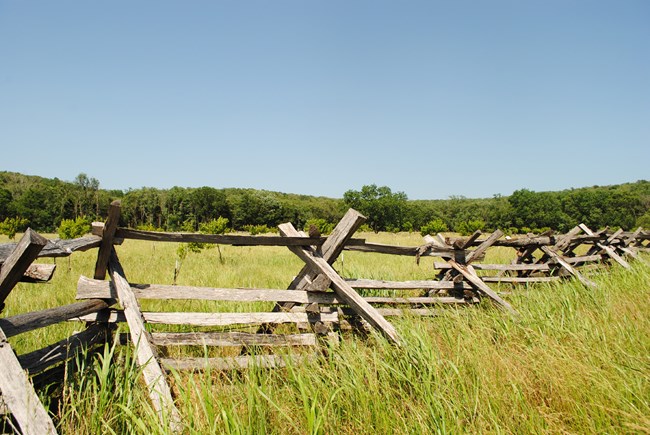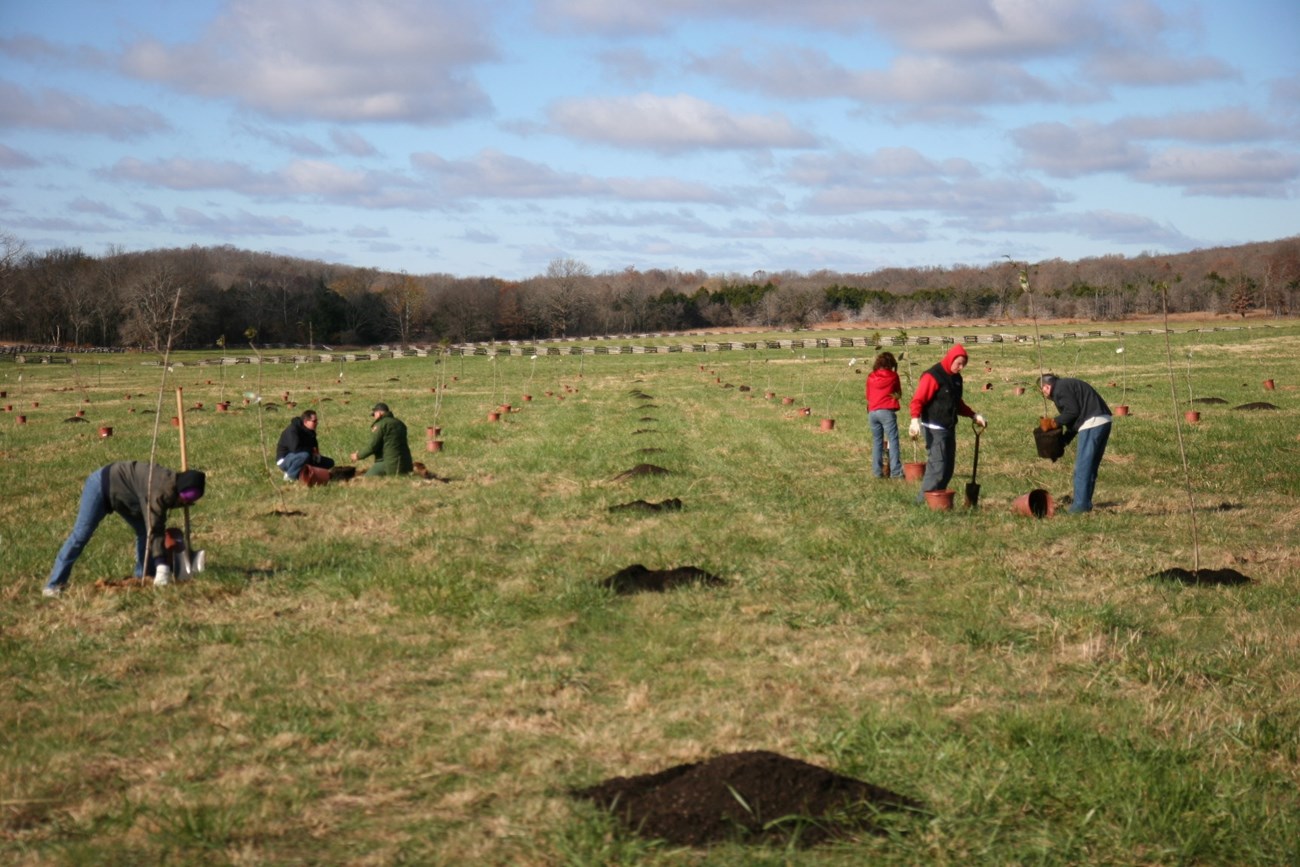Last updated: June 10, 2021
Article
Peach Orchard at Pea Ridge National Military Park

NPS / Edwards
Specimen Details
- Description: Small peach (Prunus persica) tree orchard at Ford Farm enclosed by wooden fencing established as a cultural landscape period demonstration
- Location: Adjacent to Ford Road, near Ford Cemetery on the historic Ford Farm (1/3 size of historic orchard)
- Species: Prunus persica ‘Cherokee,’ ‘Belle of George,’ & ‘Elberta’
- Landscape Use: Representative of appearance of historic orchard during Battle of Pea Ridge (1862)
- Age: Planted in 2009
- Condition: Poor to fair – for unknown reasons the peach orchard is not thriving as expected.
- Measurements: 12’-16’ tall
Historical Significance

NPS
The Battle of Pea Ridge took place in Benton County of northwestern Arkansas in 1862 during the American Civil War. Union and Confederate troops fought for control State of Missouri, ultimately resulting in a Union victory. Both the Leetown and Elkhorn Tavern battlefields, as well as surrounding areas, are preserved by the National Park Service.
At the time of the battle, the landscape consisted of woodlands, small settlements, and farms. Crop land, pastureland, and orchards supported residents’ needs. Peach trees were cultivated by European settlers as well as Native American tribes, including the Navajo and Pueblo tribes (Monticello) (Wytsalucy, 2019). Peach seeds, commonly referred to as pits, are easily transported. When germinated the variety of peach may not be true to the type due to horticultural practices such as grafting and processes such as cross pollination.

NPS
Botanical Details
Peach trees, members of the Rosaceae family, are deciduous with simple, oval shaped leaves and dark grey/brown bark. Flowers bloom in the spring and are typically bright pink. Height is dependent on the variety (specifically that of the rootstock) and can be from 6 to 25 feet tall.
Peaches can be grown in temperate regions around the world. They require full sun and well-drained soil. They were first introduced to North America from China and continue to serve as an important fruit crop.
Preservation Maintenance
Pea Ridge National Military Park, located in USDA hardiness zone 6b, intends to maintain the existing 46 peach trees. Typical peach tree maintenance involves ground cover management, fertilization, training, and pruning. The intention of the restored Ford Farm orchard is to replicate its historic appearance, not for productivity, so some typical orchard practices do not apply.
Non-native invasive, such as Chinese bushclover (Lespedeza cuneata) and Japanese honeysuckle (Lonicera japonica) present a threat to native and introduced species in the park. These species crowd out desired species, especially those like the demonstration orchard where management is for the appearance and interpretation of a historic context.

NPS
